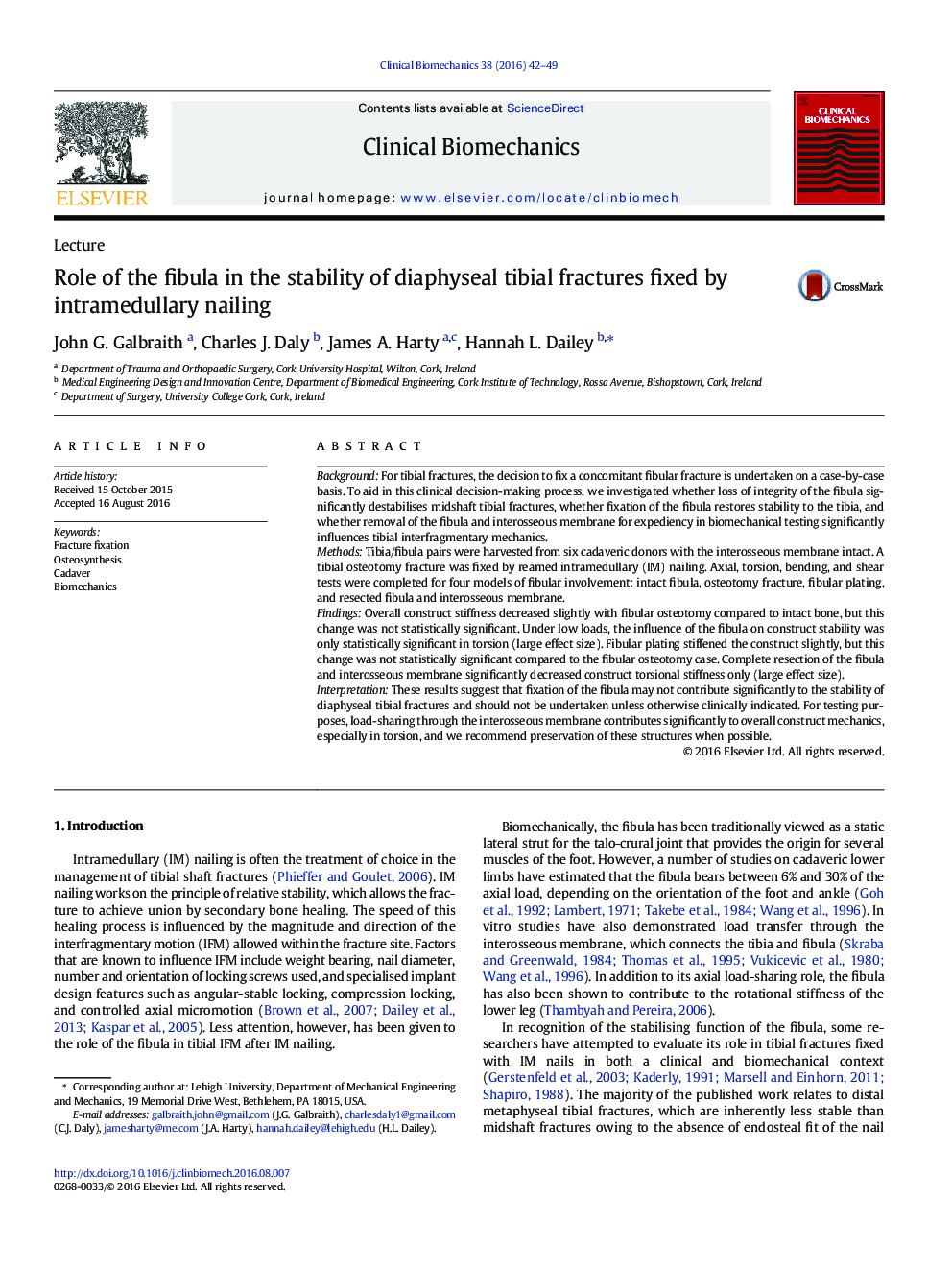| Article ID | Journal | Published Year | Pages | File Type |
|---|---|---|---|---|
| 4050055 | Clinical Biomechanics | 2016 | 8 Pages |
•Cadaver model of fibular involvement in diaphyseal tibial fracture stability•Influence of the fibula is only significant in torsional loading.•Fibular plating does not restore stability equivalent to intact bone.•Torsional stability contribution of the fibula is due to the interosseous membrane.•Retain the fibula and interosseous membrane when possible in biomechanical tests.
BackgroundFor tibial fractures, the decision to fix a concomitant fibular fracture is undertaken on a case-by-case basis. To aid in this clinical decision-making process, we investigated whether loss of integrity of the fibula significantly destabilises midshaft tibial fractures, whether fixation of the fibula restores stability to the tibia, and whether removal of the fibula and interosseous membrane for expediency in biomechanical testing significantly influences tibial interfragmentary mechanics.MethodsTibia/fibula pairs were harvested from six cadaveric donors with the interosseous membrane intact. A tibial osteotomy fracture was fixed by reamed intramedullary (IM) nailing. Axial, torsion, bending, and shear tests were completed for four models of fibular involvement: intact fibula, osteotomy fracture, fibular plating, and resected fibula and interosseous membrane.FindingsOverall construct stiffness decreased slightly with fibular osteotomy compared to intact bone, but this change was not statistically significant. Under low loads, the influence of the fibula on construct stability was only statistically significant in torsion (large effect size). Fibular plating stiffened the construct slightly, but this change was not statistically significant compared to the fibular osteotomy case. Complete resection of the fibula and interosseous membrane significantly decreased construct torsional stiffness only (large effect size).InterpretationThese results suggest that fixation of the fibula may not contribute significantly to the stability of diaphyseal tibial fractures and should not be undertaken unless otherwise clinically indicated. For testing purposes, load-sharing through the interosseous membrane contributes significantly to overall construct mechanics, especially in torsion, and we recommend preservation of these structures when possible.
